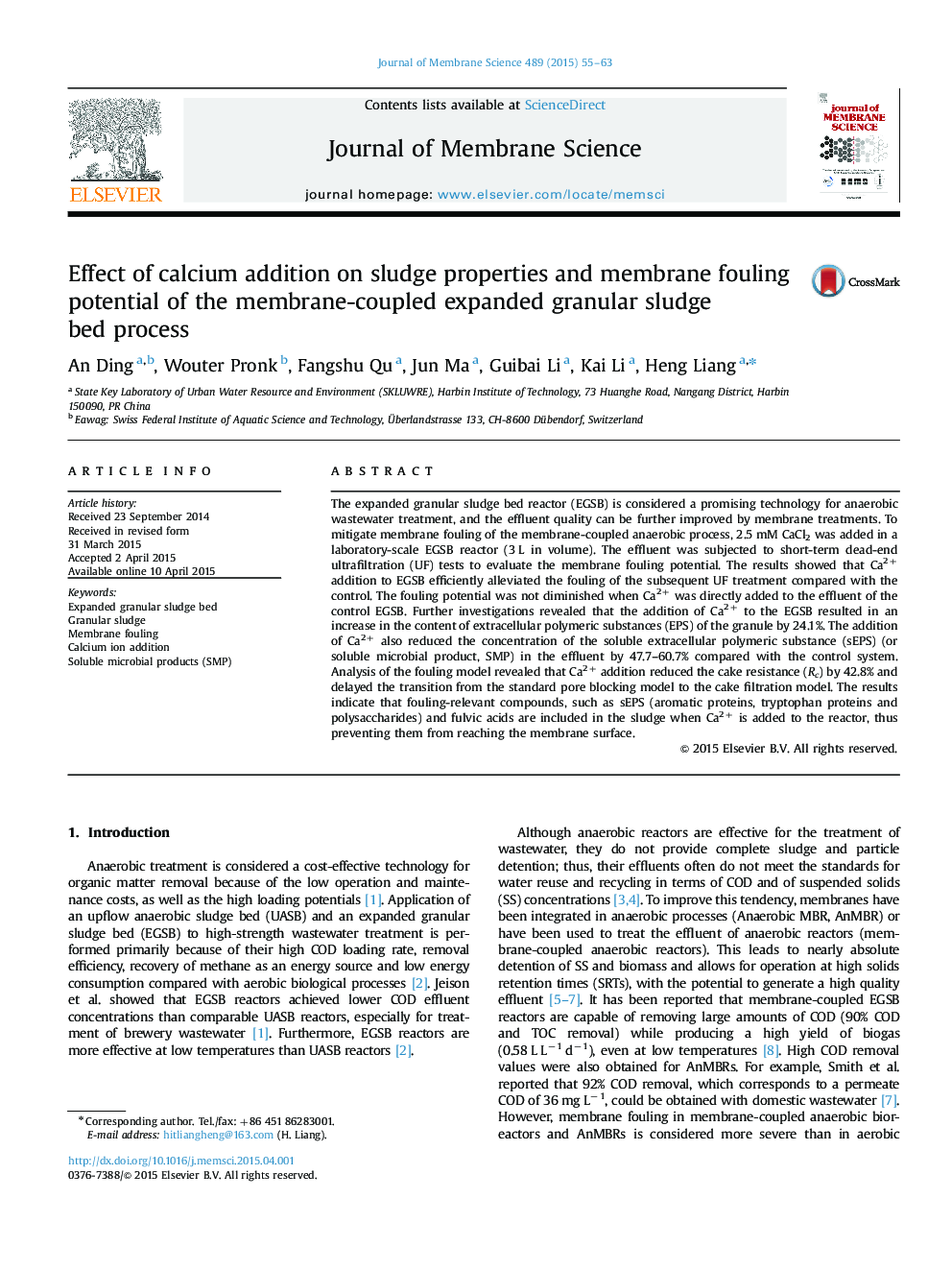| کد مقاله | کد نشریه | سال انتشار | مقاله انگلیسی | نسخه تمام متن |
|---|---|---|---|---|
| 632888 | 1456010 | 2015 | 9 صفحه PDF | دانلود رایگان |
• Ca2+ addition to an EGSB effectively alleviated the membrane fouling.
• This resulted in an increase of the EPS content in the granules by 24.1%.
• SMP (aromatic proteins, tryptophan proteins, and fulvics) was reduced by 60.7%.
• Ca2+ addition to the EGSB reduced the cake resistance by 42.8%.
• It delayed the transition from standard pore blocking to cake filtration model.
The expanded granular sludge bed reactor (EGSB) is considered a promising technology for anaerobic wastewater treatment, and the effluent quality can be further improved by membrane treatments. To mitigate membrane fouling of the membrane-coupled anaerobic process, 2.5 mM CaCl2 was added in a laboratory-scale EGSB reactor (3 L in volume). The effluent was subjected to short-term dead-end ultrafiltration (UF) tests to evaluate the membrane fouling potential. The results showed that Ca2+ addition to EGSB efficiently alleviated the fouling of the subsequent UF treatment compared with the control. The fouling potential was not diminished when Ca2+ was directly added to the effluent of the control EGSB. Further investigations revealed that the addition of Ca2+ to the EGSB resulted in an increase in the content of extracellular polymeric substances (EPS) of the granule by 24.1%. The addition of Ca2+ also reduced the concentration of the soluble extracellular polymeric substance (sEPS) (or soluble microbial product, SMP) in the effluent by 47.7–60.7% compared with the control system. Analysis of the fouling model revealed that Ca2+ addition reduced the cake resistance (Rc) by 42.8% and delayed the transition from the standard pore blocking model to the cake filtration model. The results indicate that fouling-relevant compounds, such as sEPS (aromatic proteins, tryptophan proteins and polysaccharides) and fulvic acids are included in the sludge when Ca2+ is added to the reactor, thus preventing them from reaching the membrane surface.
Figure optionsDownload high-quality image (157 K)Download as PowerPoint slide
Journal: Journal of Membrane Science - Volume 489, 1 September 2015, Pages 55–63
